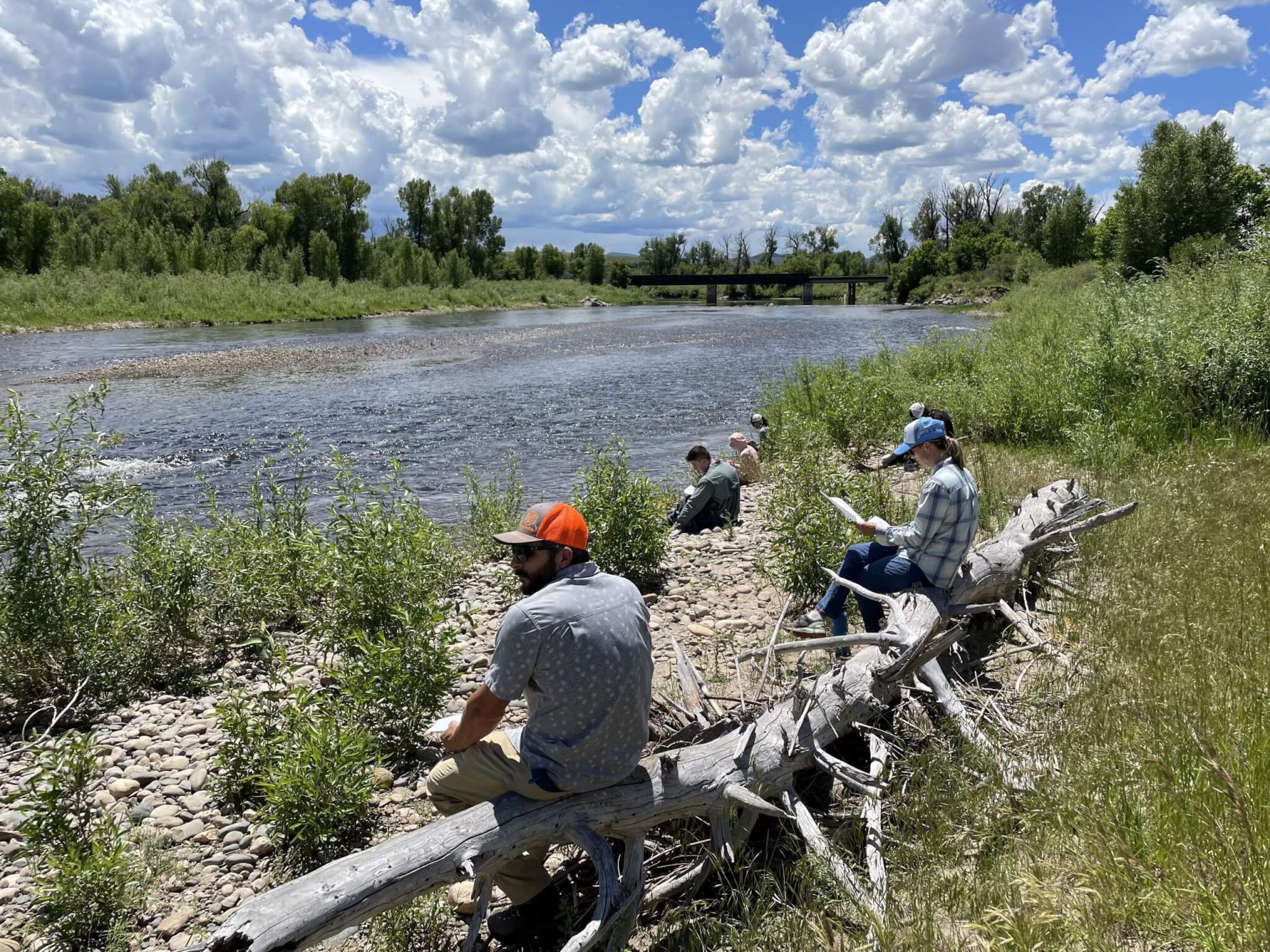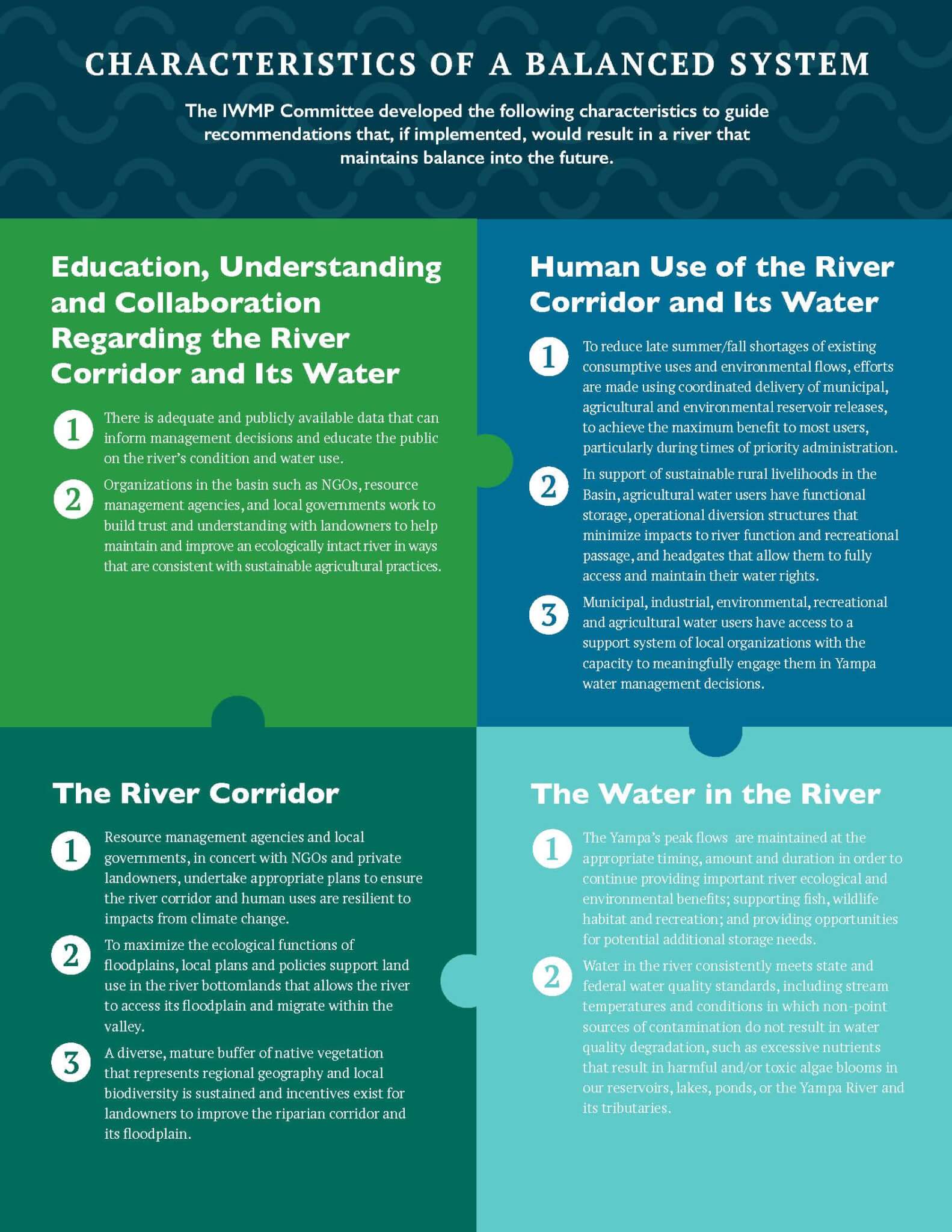Solving the Puzzle of the Yampa River
For the last four years, tucked in the northwestern corner of Colorado, a group of 27 stakeholders representing a diverse range of interest groups has come together to write an Integrated Water Management Plan (IWMP). Over this four-year period, the IWMP conducted assessments and identified consensus-driven strategies that seek to maintain a balanced river system well into the future. And now, it’s time for action.
A river is more than the water flowing through its channel. Much like the pieces of a puzzle that come together to form a picture, every element of the river plays a role in its general health and viability. From the people who use it, to the plants and aquatic life that depend on it, to the water in the channel itself, a river is an intricate and delicate network of dependents and benefactors.
River Network—active in Stream Management Planning (SMP) in Colorado for the past six years—helped launch the Yampa IWMP four years ago. Water users, local government, and river advocates wanted to make faster progress on the goals they had already identified, but because the river crosses a number of water management and political boundaries, no one organization felt positioned to lead the effort. In partnership with the Yampa White Green Basin Roundtable and a committee of local stakeholders, River Network staff member Nicole Seltzer agreed to act as Project Manager so she could leverage her knowledge gained from statewide planning in her own backyard.

SMP Peer Learning Network members on a field trip along the Yampa River, July 2022. Photo by Stacy Beaugh.
It was easy to say yes! Our team has been developing frameworks and models to help communities develop plans, projects, and strategies to improve rivers, and to do this in my own community, building it out as a model for the state, the Colorado Basin, and nationally, has been a huge honor and a wonderful learning opportunity. It also helps that the Yampa has attracted attention as one of the last remaining examples of a western river that balances ecological function with the demands placed upon it by users, and so the work took on an added urgency to protect this unique river against undesirable changes.”
-Nicole Seltzer
So launched the Yampa White Green Integrated Water Management Plan (IWMP), an integrated planning process. Its mission was to listen to all voices and examine all variables to piece together a comprehensive assessment of threats and opportunities on four geographic sections of the Yampa River: the Upper, Middle and Lower Yampa mainstem and the Elk River.
The IWMP consisted of a committee of 27 volunteers representing a diverse range of interest groups including ranching operations, industry, environmental conservation organizations, local, state and federal government, water suppliers, fisheries, and recreation. This committee was selected by and reported to the Yampa-White-Green Basin Roundtable, one of nine regional, grassroots water planning bodies established by the State of Colorado to ensure local communities have a voice in how water will be managed now and in the future. The IWMP also engaged engineering, river ecology and facilitation professionals to collect data on river condition, conduct community engagement activities and guide the process. You can read more about the planning process that made up the last four years in the IWMP Final Report.
Now, stakeholders look to action.
How can the Yampa River community, made up of many types of water users, resource management agencies and non-profits, work together to ensure ecological balance while still meeting agricultural, municipal, recreational, and industrial needs?
The answer is found in a comprehensive list of 20 recommended actions and strategies, the result of four years of building consensus through conversation, learning and deliberation. Each recommendation includes metadata outlining who will lead them, how they’ll be funded, and how the community and landowners can be involved. The 27 members of the Yampa Integrated Water Management Committee believe that, if we work cooperatively on the following shared ideas and projects, the river’s ecosystem will remain in balance with its human users for years to come.
It was imperative that the group agree upon a definition of a ‘balanced river.’
We each rely upon the river differently, and have different goals for it, so it was a big achievement for all of us to get on the same page with how we define what a river that balances human use and ecological integrity looks like. Our consensus-based definition isn’t what any one stakeholder would have developed, but its beauty is in the level of buy-in that we all now have.”
-Nicole Seltzer
Each of us has a role to play in solving the puzzle, piece by piece, step by step. It’s time to act and bring greater awareness to the challenges facing water users and the river, and perhaps more importantly, to see what we can accomplish when we work together.”
What’s more, this process has created a model for groups around Colorado, and hopefully across the entire Colorado River Basin and the nation, to plan for the future of local rivers in a way that is multi-stakeholder, integrated, and sustainable, putting all the pieces together to create the unique picture of a balanced river in each basin across the country.
River Network staff in the Colorado River Basin have developed expertise in integrated, multi-stakeholder planning processes on a large scale and are eager to spread this model. While the subject matter may differ across states, regions, and water challenges, the process and challenges inherent to river planning are often the same. We can’t wait to see how this model is replicated across the nation in the years and decades to come.
River Network’s engagement in the Yampa River is now shifting to the development of a formal conservation collaborative to work together to implement the recommendations of the IWMP. Our plan is to develop shared metrics of success, shared funding sources, and leverage each organizations’ unique mission to do more than we can alone. Together, those who care about and rely on the Yampa River can continue to solve the puzzle of climate change impacts, human needs and preserving one of the last wild rivers in the American West.






